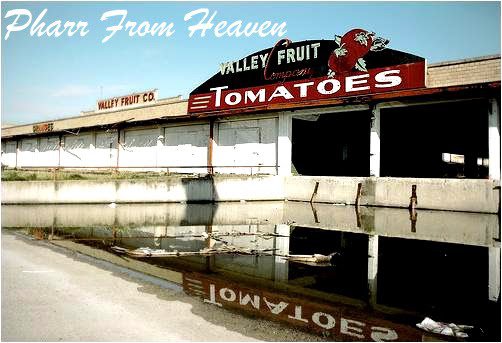On Friday afternoon, my cousin Mike gave me a call that he was headed over my way to drop off a research paper that had been put together by his father (my Tio Chano) and Dr. Jaime Armin Mejia of Texas State University. I had been corresponding with my Tio via email on matters of South Texas' music, specifically of the cojunto variety. My dad had told me that my Tio was one of the leading figures in bringing attention to an unknown conjunto pioneer named Arnulfo Olivo (who happened to by my dad and uncle's uncle).
My cousin arrived shortly with a manila envelope containing the contents of this research paper that I had anxiously been waiting for. This paper was presented at the Texas/Southwest Popular Culture Association on February 5th, 1993 at Texas A & I University in Kingsville, Texas. The title of the paper was "Arnulfo Olivo: His Influence on Today's Texas-Mexican Conjunto Music", and here is my bullet point summary of this great research paper:
- Arnulfo Olivo was born on November 4th, 1903 in a small ranch called "El Capote", which was located north of San Juan, TX. One interesting bit of information is that another obscure conjunto pioneer, Lolo Cavazos, was also born in "El Capote", three years after Olivo.
- Ponciano "Chano" and Panchie Martinez, through research, were able to come to the conclusion that many modern musical compositions made famous by Narciso Martinez, Pedro Ayala, and Don Santiago Jimenez were compositions Arnulfo Olivo had composed. Mejia goes on to elaborate, "it should further be noted that their recording of some of Olivo's music compositions sealed their place as pioneers and icons in the Tejano Conjunto music world."
- As an 18-year-old man, Olivo married the 15-year-old Thomasa in 1921. Thomasa goes on to suggest that Olivo was playing the accordion in 1920 in public places across the lower area of the RGV. Some of these places include "salónes" and dance halls.
- Since he started playing in 1920, it should be noted that he started many years before Pedro "El Monarca del Acordeon" Ayala and Narciso "El Huracan del Valle" Martinez.
- According to Thomasa Olivo, Arnulfo began working as a musician in San Benito's most popular salón. The owner of that particular salón was a woman known as "La Tia Chucha". He started working there on December 1930 and was there until March 1931.
- Narciso Martinez ended up visiting this establishment to see Arnulfo Olivo perform. Thomasa Oliva strongly believes that the only reason Narciso visited this salón was to "steal" the original compositions that Arnulfo had created. This research paper describes the relationship between Arnulfo and Narciso as, and I quote, "not a friendly rivalry."
- Tia Chucha's salón was set on fire and burned down in 1931. This act of arson is believed to be the result of rivals of this establishment being upset with its success. Stuff like this happening wasn't rare at the time.
- Pedro Ayala had the reputation of being the musician most open in referencing and mentioning the work of his peers, like Arnulfo Olivo.
- Arnulfo Oliva allowed and agreed to let Pedro Ayala record some of his own creations, which didn't sit well with Oliva's wife.
- It's something of a mystery, but for some reason, Olivo never recorded his musical work. So no recordings by him of his own art exist.
- Donna, Texas musicians Antonio Cavazos, Juan Trevino, Lupe Trevino, Lupe Torres and Olivo's wife have credited the following compositions to Arnulfo Olivo: "Los Jacalitos", "Say y Pimienta", "Labios de Coral", "La Chulada", "Senderito", "Chicharronada", "La Pajareda", "El Naranjal", "Rio Rico", and some others. Olivo's wife claims that Arnulfo had as many as 27 compositions in his repertoire in 1923.
- Willie Lopez, who just recently passed away on March 4th, 2011, would play Olivo's compositions that were done by other musicians. Apparently, Willie Lopez would always pay homage to Olivo by mentioning that these compositions were composed and created by Arnulfo Olivo. Here is a clip of Willie Lopez, who had a long lasting Valley radio show named Chulas Fronteras. For those wondering, I will pay tribute sometime soon to the late, great Willie Lopez.
- On page 6 of the research paper, Mejia mentions this interesting information: "Manuel Pena has stated that in the 1930s, an American recording company came to contract Arnulfo Olivo to record some of his compositions, but again, for reasons that are still not clear, he refused to sign a contract, and instead recommended that Pedro Ayala be hired in his stead".
- By 1937, Olivo pretty much stopped playing music in public on a regular basis. He would still play for his family, friends, and some wedding receptions that were "in his barrio".
- Arnulfo Olivo passed away on May 27th, 1983 in Donna, Texas. He was 80 years old, and died as a totally obscure figure of conjunto music. He left behind his wife Thomasa, one of the very few people who would speak of his contributions to conjunto music. To this day, he is still a mysterious and obscure figure.
- Eduardo Martinez


